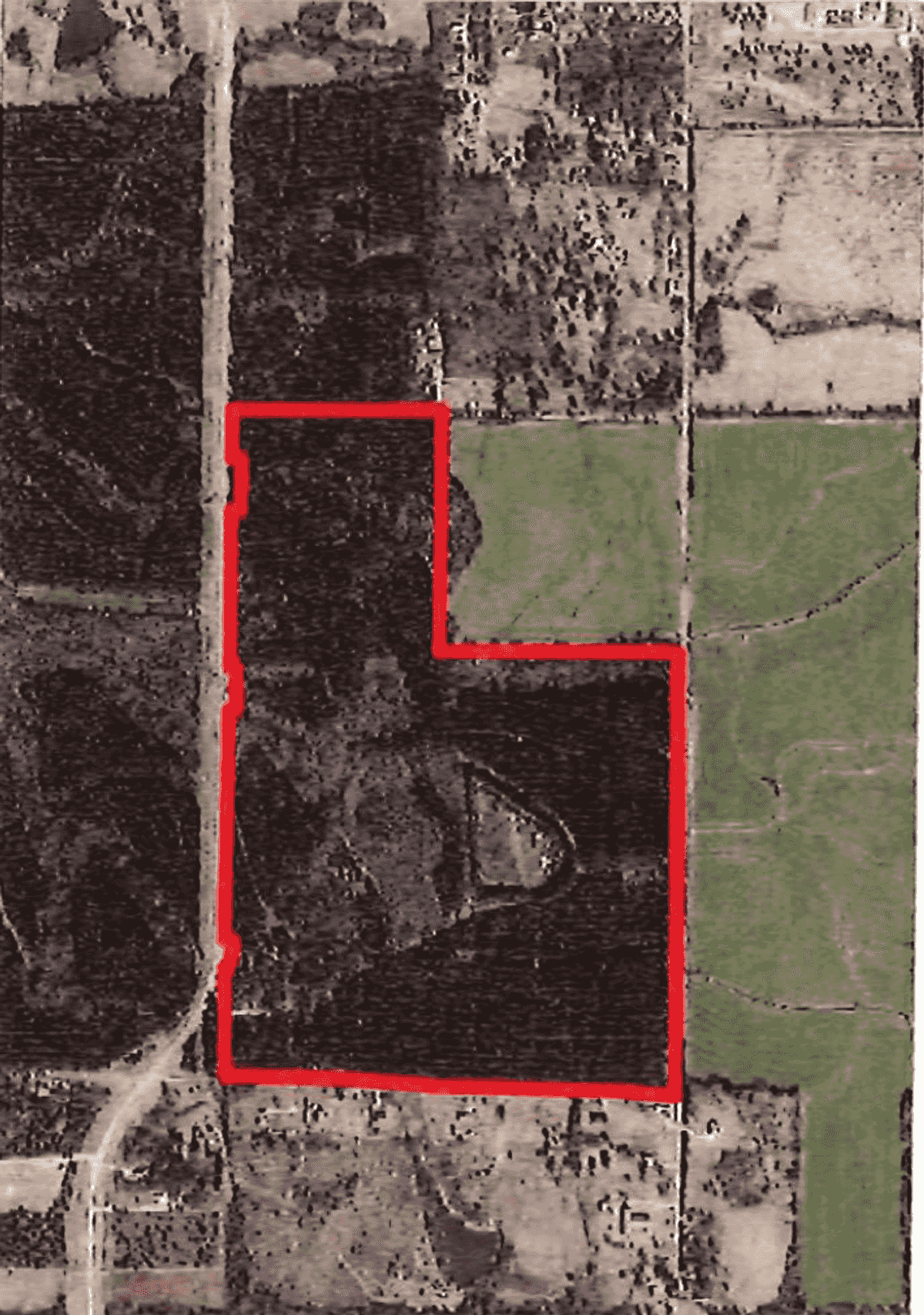Proposed industrial park faces backlash from neighbors – Madison County Journal

Report on Proposed Industrial Rezoning in Madison County and its Alignment with Sustainable Development Goals
1.0 Executive Summary
A proposal by the Madison County Economic Development Authority (MCEDA) to rezone a 625-acre agricultural parcel for industrial use has been deferred following significant opposition from local residents. The conflict highlights a tension between the pursuit of economic growth, as outlined in Sustainable Development Goal 8 (Decent Work and Economic Growth) and SDG 9 (Industry, Innovation, and Infrastructure), and the imperative to protect community health and create sustainable communities, central to SDG 3 (Good Health and Well-being) and SDG 11 (Sustainable Cities and Communities). The decision by the Madison County Board of Supervisors to table the request underscores the importance of inclusive institutions (SDG 16) in mediating development disputes.
2.0 Industrial Development Proposal: Pursuing SDG 8 and SDG 9
MCEDA’s request to rezone the property from Agricultural (A1) to Industrial (I2) is positioned as a strategic initiative to foster regional economic vitality.
2.1 Project Justification
- Economic Growth (SDG 8): Proponents argue that the development of an advanced manufacturing technical park is necessary for continued economic growth, building on the success of the adjacent Madison County Mega Site, which is nearing capacity.
- Infrastructure and Innovation (SDG 9): The proposal aims to leverage existing infrastructure to create a “shovel-ready” site for future industrial development, positioning the area as an attractive location for advanced manufacturing and professional services.
2.2 Proposed Mitigation Measures
To address potential negative externalities, MCEDA has committed to implementing:
- Covenants and restrictions prohibiting noisy, odorous, or hazardous activities.
- A buffer zone to protect residential properties to the south.
3.0 Community Opposition: Highlighting SDG 3 and SDG 11
Residents voiced strong opposition, citing adverse impacts that directly challenge the principles of sustainable and equitable development.
3.1 Health and Well-being Concerns (SDG 3)
- Residents near the existing Mega Site reported diminished quality of life and negative health outcomes.
- One resident detailed experiencing asthma attributed to dust from the Amazon facility, a significant concern related to ensuring healthy lives and well-being for all.
3.2 Sustainable Community Concerns (SDG 11)
- Inclusive and Safe Settlements: Residents expressed fears that the industrial park would degrade their established neighborhoods through increased traffic, noise pollution, and a general decline in quality of life. An offered 150-foot buffer was deemed inadequate.
- Property Values: Homeowners associations and supervisors noted that while land values have increased in some areas, residential properties adjacent to industrial zones have become undesirable, threatening the economic stability of homeowners.
- Reduced Inequalities (SDG 10): Community representatives questioned the equitable distribution of economic benefits, arguing that long-term residents, including the elderly, bear the negative consequences of development without sharing in the prosperity.
4.0 Governance and Path Forward: The Role of SDG 16 and SDG 17
The Madison County Board of Supervisors’ decision to table the petition reflects a commitment to institutional accountability and stakeholder partnership.
4.1 Institutional Response (SDG 16)
- The Board acknowledged the validity of resident concerns and the existence of “a lot of unanswered questions.”
- By deferring the decision and remanding it to the Planning and Zoning Board, the supervisors demonstrated a commitment to responsive, inclusive, and participatory decision-making, a core target of SDG 16.
- A motion to deny the petition was initially made, citing a lack of prior consultation with communities by MCEDA, highlighting a breakdown in transparent governance.
4.2 Call for Partnership (SDG 17)
- The board president expressed a desire for MCEDA and community groups to “come together and address some of these issues.”
- This directive promotes a multi-stakeholder partnership approach, essential for balancing economic, social, and environmental objectives to achieve sustainable development. The rezoning request will now undergo further review and community dialogue before a final decision is made.
Analysis of Sustainable Development Goals in the Article
1. Which SDGs are addressed or connected to the issues highlighted in the article?
- SDG 3: Good Health and Well-being – The article highlights health concerns arising from industrial activity, such as dust and asthma.
- SDG 8: Decent Work and Economic Growth – The proposed industrial park is an economic development project aimed at creating jobs and attracting manufacturing.
- SDG 9: Industry, Innovation and Infrastructure – The development of an “advanced manufacturing technical park” is a direct example of industrial infrastructure development.
- SDG 11: Sustainable Cities and Communities – The core conflict revolves around urban planning, land use, quality of life, traffic, and property values in a community.
- SDG 16: Peace, Justice and Strong Institutions – The article details a local governance process, including public opposition, community participation, and the decision-making of the Board of Supervisors.
2. What specific targets under those SDGs can be identified based on the article’s content?
-
SDG 3: Good Health and Well-being
- Target 3.9: By 2030, substantially reduce the number of deaths and illnesses from hazardous chemicals and air, water and soil pollution and contamination. This is relevant to the resident’s account of experiencing dust and asthma from the existing Amazon facility.
-
SDG 8: Decent Work and Economic Growth
- Target 8.2: Achieve higher levels of economic productivity through diversification, technological upgrading and innovation. The plan to create an “advanced manufacturing technical park with professional offices” aligns with this target.
-
SDG 9: Industry, Innovation and Infrastructure
- Target 9.2: Promote inclusive and sustainable industrialization. The entire debate in the article is about whether the proposed industrialization is sustainable and inclusive of the local community’s well-being.
-
SDG 11: Sustainable Cities and Communities
- Target 11.3: By 2030, enhance inclusive and sustainable urbanization and capacity for participatory, integrated and sustainable human settlement planning and management in all countries. The conflict between the economic development authority (MCEDA) and residents, and the board’s decision to table the rezoning for further discussion, directly relates to participatory and sustainable settlement planning.
- Target 11.6: By 2030, reduce the adverse per capita environmental impact of cities, including by paying special attention to air quality. The concerns about dust from the existing industrial site directly address the issue of air quality.
-
SDG 16: Peace, Justice and Strong Institutions
- Target 16.7: Ensure responsive, inclusive, participatory and representative decision-making at all levels. The article showcases this target in action through residents voicing strong opposition, a community spokesperson representing their concerns, and the Board of Supervisors responding to this public input by delaying the decision to allow for more dialogue.
3. Are there any indicators mentioned or implied in the article that can be used to measure progress towards the identified targets?
-
For SDG Target 3.9:
- Air Quality Levels: Implied by the mention of “dust” from the Amazon facility. Progress could be measured by monitoring particulate matter in the air around industrial sites.
- Prevalence of Respiratory Illness: Implied by the resident’s statement that she has “become accustomed to asthma.” An indicator would be the rate of asthma and other respiratory conditions in the local population.
-
For SDG Target 11.3 & 16.7:
- Level of Public Participation in Planning: The article explicitly describes strong community opposition, the presence of a spokesperson, and an HOA representative’s objection. The number of residents attending meetings and the formal inclusion of community feedback in the final decision are measurable indicators.
- Responsiveness of Governing Bodies: The Board’s decision to “table the petition and send it back to the Planning and Zoning Board” in response to “unanswered questions” and resident concerns is a direct indicator of a responsive institution.
-
For SDG Target 11 (General):
- Residential Property Values: The article explicitly mentions residents’ concerns about the “potential for property values to be ‘detrimentally affected'” and a supervisor’s observation that “values of residential property next to the industrial areas are becoming undesirable.” Tracking changes in property values adjacent to the development would be a direct indicator.
- Perceived Quality of Life: Residents’ concerns about “quality of life,” noise, and traffic are mentioned throughout. This can be measured through community surveys assessing resident satisfaction.
4. SDGs, Targets, and Indicators Table
| SDGs | Targets | Indicators (Identified in the Article) |
|---|---|---|
| SDG 3: Good Health and Well-being | 3.9: Reduce illnesses from air pollution and contamination. | Prevalence of respiratory illness (e.g., asthma); Air quality measured by dust levels. |
| SDG 8: Decent Work and Economic Growth | 8.2: Achieve higher levels of economic productivity through diversification and technological upgrading. | Establishment of an “advanced manufacturing technical park.” |
| SDG 9: Industry, Innovation and Infrastructure | 9.2: Promote inclusive and sustainable industrialization. | The conflict over whether the industrial park development considers community well-being and environmental impact. |
| SDG 11: Sustainable Cities and Communities | 11.3: Enhance inclusive and sustainable urbanization and participatory planning. | Level of public participation in rezoning decisions; Responsiveness of the Board of Supervisors to community concerns. |
| SDG 11: Sustainable Cities and Communities | 11.6: Reduce the adverse per capita environmental impact of cities, paying attention to air quality. | Reports of dust from existing industrial sites affecting residents. |
| SDG 16: Peace, Justice and Strong Institutions | 16.7: Ensure responsive, inclusive, participatory and representative decision-making. | The Board’s action to delay the vote to allow for dialogue between the development authority and community groups. |
Source: onlinemadison.com
What is Your Reaction?
 Like
0
Like
0
 Dislike
0
Dislike
0
 Love
0
Love
0
 Funny
0
Funny
0
 Angry
0
Angry
0
 Sad
0
Sad
0
 Wow
0
Wow
0
















































/environment-climate-change-and-health-(ech)/water-sanitation-hygiene-and-health-(wsh)/landfill-tuvalu-36092.tmb-1200v.jpg?sfvrsn=5c21fe40_1#)

.jpg.webp?itok=0ZsAnae9#)


























